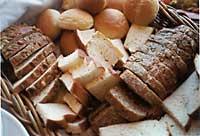Microorganisms in food: not all are harmful
2001/07/15 Galarraga Aiestaran, Ana - Elhuyar Zientzia
However, the effect of microorganisms is sometimes beneficial. For example, many of the foods that humans need are obtained thanks to bacteria that live in the intestine. And many other micro-organisms intervene in the conservation and production of food or in the creation of flavors.
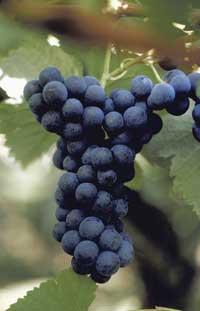
There are more than 3,500 modified or fermented foods in the world controlled by microorganisms, such as bread, yogurt or cheese, so common to us. In Africa, products derived from soy and fermented fish are the ingredients of the daily diet. In addition to meals, fermented drinks are well known; apart from wine, cider, beer and other alcoholic beverages, there are others such as coffee, tea or cocoa. In fact, once the leaves or the grains are collected, a fermentation occurs that gives them their particular flavor.
Thanks to fermentation, the sensory characteristics of food and drinks (texture, flavor, smell) change, so different types of food are obtained from a raw material. In addition, they become more nutritious and digestion is facilitated. On the other hand, as it lasts longer, it decreases the need for cold storage or to use another method of conservation, which reduces the energy consumption necessary for the conservation of these foods.
The best known microorganism related to food and drinks is yeast. Until the microscope was invented in 1676, the causes of fermentation were not known. The first scientific explanations on the influence of yeast were made by Louis Pasteur, when in 1876 he published Études sur la Biere (Studies on beer). However, yeast has been used for more than a thousand years to produce bread and alcoholic beverages. What's more, more than 6,000 years ago in the Middle East did not need scientific knowledge to produce wine.
The use of yeast was rapidly extended. Thus, the method that appears in the manuscripts found in ancient Babylon to produce an alcoholic drink with barley or wheat has been used for centuries: first the grains were left in the water, then put to the sun to fertilize and, once cooked, they were allowed to ferment. The Sumerians had fifteen types of beers and in many other countries such drinks were also common.
Miracle of grape wine
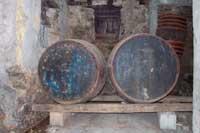
The yeast is found spontaneously on the surface of the cereals and the grapes, so it is considered that the drinks derived from them were due to chance. Apparently, the wine juice that had not been ingested immediately or the papilla made with water and hundreds, after several hours in the sun, became a sparkling drink. Someone dared to try (perhaps because he had nothing to eat) and liked it. Alcoholic beverages with wine, beer, cider and other fruits and cereals were probably born. Since then they became signs of identity of each people, for example, the Romans extended the secret of vinification to all conquered territories. On the other hand, the function of these drinks varied according to the place or time when they were produced: mystical, religious, social, etc. For Christians, wine represented the blood of Christ. In the current industry of alcoholic beverages, the type of yeast suitable for each raw material is added in a given quantity, and the mixture is placed at a temperature and a half suitable for the yeast to perform its work in the best conditions. Thanks to the action of yeast, the sugars of fruits or centenarians become carbon dioxide and alcohol. And upon reaching a certain amount of alcohol, the yeast growth stagnates. Therefore, each drink carries its own alcohol content.
The same happens with the ground rye. In the preparation of bread, the yeast is of great importance, since the dough grows and swells due to its effect. Thus is obtained the spongy breadcrumb.
The Infinite Universe of Dairy Products
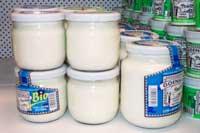
In addition to the process of making wine and bread, yeasts also participate in dairy products. For example, what is that sort of cauliflower that we clean for the next period when making kefir and put back in milk? Yeasts and bacteria of kefir. Yeasts metabolize milk or lactose sugar and provide carbon dioxide and alcohol, while bacteria convert this sugar into lactic acid. The result is a light, sparkling, and acidic dairy. In addition, by varying the nutritional characteristics of milk, kefir contains other vitamins and nutrients and its digestion is lighter than the original milk.
Lactic bacteria are also used to make yoghurts. There are more and more types of yoghurts to choose from and each of them is obtained by associating the action of different bacteria. The lactic acid that bacteria provide acidifies the medium, which modifies the structure of milk proteins. Finally, the milk is cooked, obtaining a special texture of the yogurt. In turn, special flavors and smells are produced.

Although until a few years ago the yoghurts were not common in Euskal Herria, the microorganisms of milk are friends of the shepherds. For example, the white skin of cylindrical goat cheese is obtained thanks to specific backgrounds and others can be in the skin of Roncal cheese. Outside of Euskal Herria are well known cheese type brie and camembert, covered by a white layer of mushrooms. Roquefort and blue cheeses, on the other hand, have the mushrooms spread throughout, which gives them their characteristic texture, color, aroma and flavor.
Thanks to all these microorganisms, the milk that is such a perishable drink is transformed into a food that remains much longer. In addition, anyone can have their favorite product, as they produce unlimited flavors, smells and textures. And for those who do not accept milk lactose, these dairy products are a good option for calcium and other benefits of milk.
Therefore, the benefits that some microorganisms produce are remarkable and pleasant. The best known examples are the previous ones, but they also participate in the production of many other foods such as sausages, several fish, soy sauce, thickeners and other additives that are added to eleven foods. Therefore, not all microorganisms are of the same splinter and some know to be pigeons at home.
Functional food or dream vendors?
It is known that food has a direct effect on health and that due to lifestyle changes and other factors, there are more and more people with food-related health problems. Therefore, seeing that it is essential to take care of the daily diet, the topics that are treated arouse great interest.
In response to this concern, the food industry has invented foods that seem to cure diseases or improve their health status: functional foods. So, for example, foods that lower blood cholesterol, protect the heart, or reduce the risk of cancer.
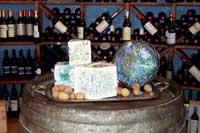
The desired effect is achieved by adding additives to food or by substituting some components for others. In this way, the dietary characteristics of food and their influence on health are modified, but they retain their original flavor and appearance. For example, omega-3 fatty acid or milk with more calcium has the form of normal milk; the light chorizo to which the bifidus has been added has flavor and smell of the usual chorizo, but does not fattened and predict that it is much healthier.
It seems that the consumption of these products is growing, since the offer is increasingly wide. At the same time, given the doubts and confusions that are taking place, the United Nations Food and Agriculture Organization, the Council of Europe, and the agencies responsible for each State are developing a regulation. According to this Regulation, only proven and proven effects may be announced.
In addition, we must take into account the economic performance that the food industry obtains with the sale of each grain of these products. If necessary, a balanced and varied diet is cheaper and appetizing, and healthier.
Published in the supplement Natura de Gara.

Gai honi buruzko eduki gehiago
Elhuyarrek garatutako teknologia




